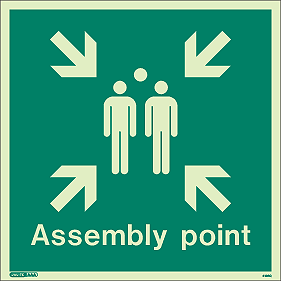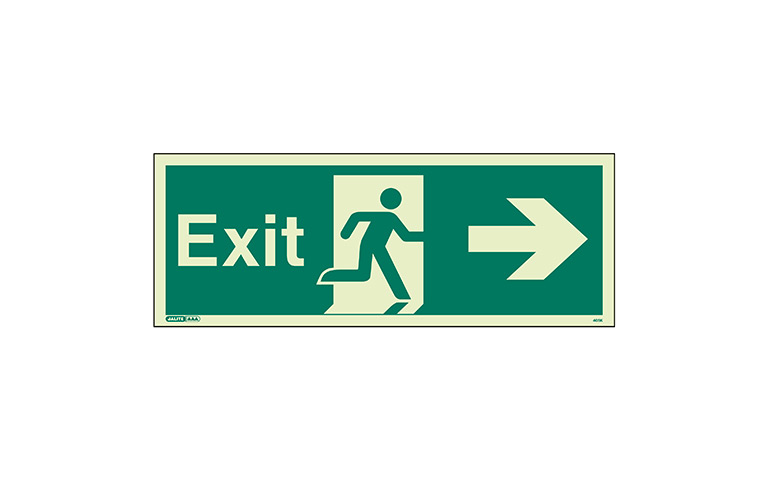Accreditations
We are a BS EN3 ISO 9001 Registered Company and all of our equipment is kite marked to BS EN3.
Clearly marked safety signage helps to save vital seconds and minutes in a fire. Walker Fire stock a large range of signage and our technicians will advise which ones you need and where the should be placed for maximum effectiveness.
There are different types of signage required within a property. These are identified in a fire risk assessment .  Having the correct signage in the correct location can save lives in the event of a fire.
Having the correct signage in the correct location can save lives in the event of a fire.
Fire safety signage is informative. However, most of the time we do not notice it, but it is there, in an emergency to help keep people safe and identify fire safety provisions along with assisting escape.
As a result, the signage displayed helps to identify escape routes and fire safety equipment. An example of this is; the type of fire extinguisher and it’s suited use. But it can also give directional advice about the layout of of a building. For example the escape route in a hotel or commercial premise.
Photo luminescent properties of some fire safety signage, means they are visible even in darkness – therefore, highlighting key information even when no light source is available. An example of this may be a power cut.
Below are some of the common signage you see around buildings and premises:
From any given point within a building, people must have clear directional guidance on how to reach a place of safety. These instructions are given by using standard evacuation signs along the evacuation route.
The evacuation safety system is compromised of signs positioned above doors and signs indicating all changes of direction along an evacuation route. It is essential that when reaching a sign people can already see the next one and continue that way until the final exit.
All escape route signs are recommended to be installed between 1.8m and 2.5m from floor level to the base of the sign.
Below are a few examples of the Emergency Escape Route Signs.
These are positioned and installed in a way that guarantees their visibility from any point within a building. In case of fire it is essential that fire-fighting equipment is readily available to be used as a first response. For this reason such equipment needs to be identified quickly and easily. Permanent signs must be used at all times and placed at the location of each piece of equipment and at the correct height of 1.8m to 2.5m (or even higher depending on the viewing distance or whether any objects hinder visibility).
In situations where fire fighting equipment and location signs are not clearly visible, another sign is required to identify the location of the equipment.
This ensures prompt and easy identification of this type of equipment.
Identical signs are also placed directly above the equipment as this will also help to identify what type of extinguisher to use.
Below are a few examples of the Fire Safety Signs that we can provide.
When identifying different levels of risk, these signs must be positioned to clearly identify the nature and the location of hazards.
In all situations where certain actions or behaviour can be dangerous or cause risk. Prohibition signs must be used in order to reduce the risks associated with this type of behaviour.
Using the correct hazard signs in the right locations will reduce the number of dangerous incidents and the risk of accidents. Special attention is given to placing the signs in a clear and visible location before encountering the hazard. Signs also need to be as near as possible to the risk areas. For example, in an area where fork-lift trucks operate, signs should be placed on all doors leading into this area as well as positioning other complementary signs at a higher level.
To ensure the use of Personal Protective Equipment (PPE) or to indicate that a specific course of action is to be taken mandatory signs must be used.
Below are a few examples of the Health & Safety Signs that we can provide.
Below are a few examples of the Prohibition Signs that we can provide.
The size of the sign is chosen according to the maximum viewing distance and the layout of the premises. However, the viewing distance at which a sign of particular size is conspicuous and comprehensible depends on the sign category, illumination factors and level of detail.
Viewing distances (according to BS ISO 3864-1: 2011)- Fire equipment and sign categories.
Viewing distances (according to BS 5499-4:2000)- Escape route signs.

In conclusion, Safety signs are essential to ensure your premises displays correct information and instructions.
Call us today on 0800 731 3630
There are many reasons to choose Walker Fire and our quality first approach to fire safety. We’re passionate about what we do and strive for nothing short of excellence for our clients
We are a BS EN3 ISO 9001 Registered Company and all of our equipment is kite marked to BS EN3.
Founded in 1940, we have been providing our quality fire safety services and products ever since.
We have locations strategically placed throughout the UK to ensure we’re always best placed to serve your needs.
In our 75 year history, we’re lucky to have worked with some fantastic, conscientious companies who are as passionate about fire safety as we are. Read about a small selection of them in our case studies.